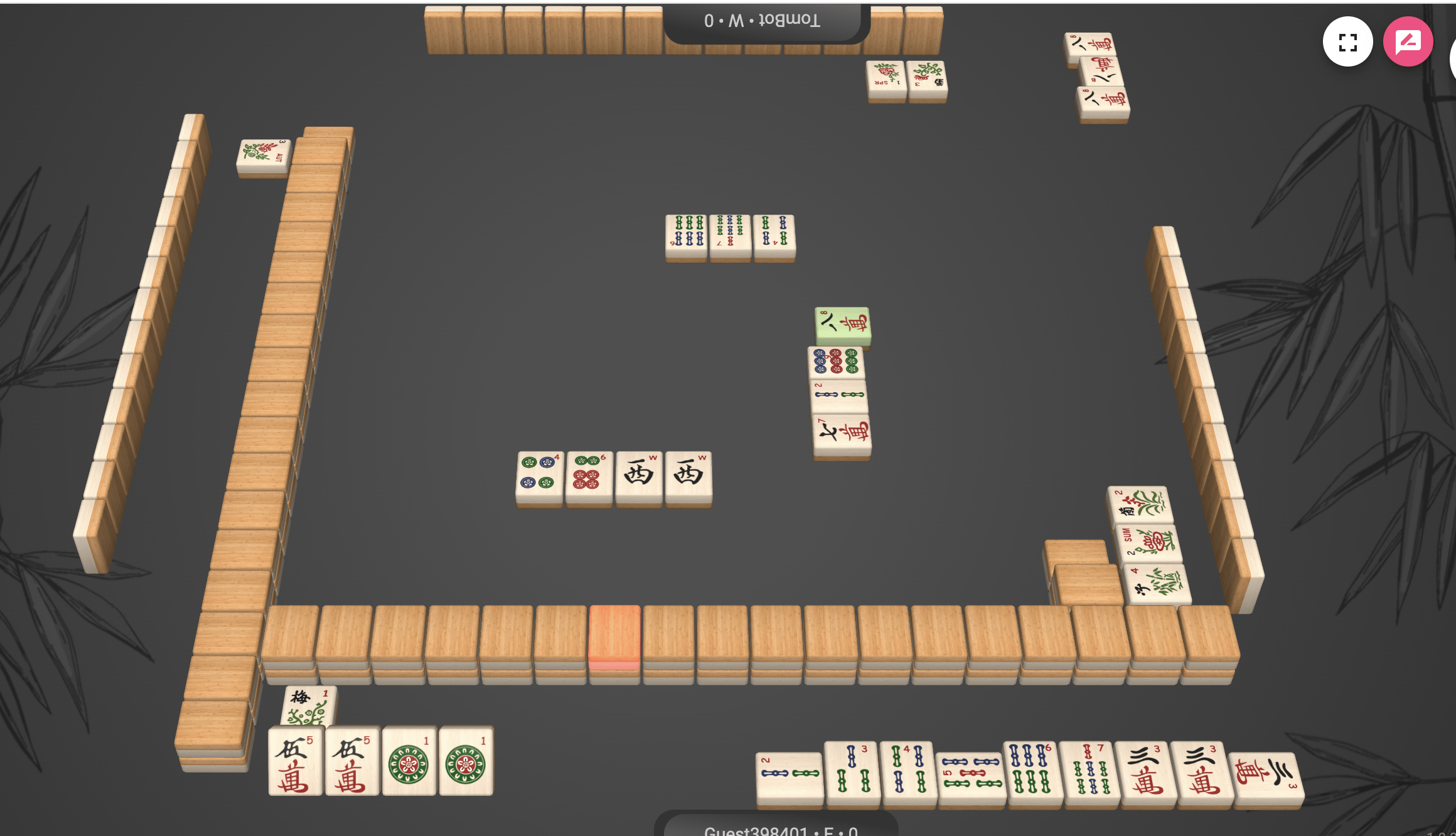
Mahjong
Mahjong is a Chinese game of chance invented by Confucius which involves four players. The objective of mahjong is to build sets, as well as get the highest point value. In order to do this, each player selects and discards tiles (the game pieces, bearing different designs) until an entire set of combinations has been made. For this gameplay, I played on an online platform with strangers. Due to the game mechanics of drawing, discarding, and building tiles and guessing opponents’ hands through discard actions, mahjong is a highly addictive game that uses randomness.
During retirement, my grandmother became highly addicted to mahjong. She once spent $3,000 USD in mahjong parlors and online spaces in a particularly bad month. In fact, mahjong is so popular among 40-60 years old in China that there has been a 77% surge of drug use in order to play at all-night mahjong marathons. Looking at the game, you can see why it’s addictive:
- Due to the finite number of pieces in the mahjong set 36 distinct kinds of pieces (9 numbers per 4 suits), mahjong players can calculate probabilities of acquiring a certain tile. They must balance this strategy with the randomness of tile distribution, drawing tiles, and wall building. The randomness of tiles leads to the dynamic of users constantly recalculating which tile they are most likely to draw and which tiles are secretly harbored by other players. This challenge keeps users engaged in gameplay during each round.
- Because walls are never arranged in the same way and players receive a different starting hands each game, mahjong has a high level of replayability. The desire to explore the various possibilities and discover new “pung” and “chow” combinations keeps players engaged and coming back for more. During online chats, players type “I drew such a band hand, what is my luck” or “so unlucky” when they start the game to explain their lack of “pung” or “chow” actions. In other words, losing is attributed to “luck” in mahjong but “winning” is attributed to skill. Because the player is only “responsible” for good, the game is enticing.
- Players cannot see each other’s cards but can see all cards discarded in the middle of the table which impacts. This leads to interesting dynamics of players beginning to bluff and call out bluffs when playing. When I was playing the online game, other players chatted “she must have the 1 Bamboo because I have 1 and the other 2 are in chow combinations.” I replied with a bluff and said that the “1 Bamboo was in the walls” to distract the other player. Fellowship is created through these interactions.
However, mahjong can often become a very boring game because there aren’t ways to elevate risk as a result of randomness or bluffing. In poker, for example, players can bet and fold as a way to make their bluffs more consequential. You can also goad other players to reveal information and increase risk through raising. In mahjong, you must stick to your original bet even if you were randomly dealt a bad hand or you know how to outsmart your opponent and can win. Because of this, mahjong is often abandoned by skilled players who believe the main interaction loop of bet, draw, discard, pung/chow is not complex enough.



